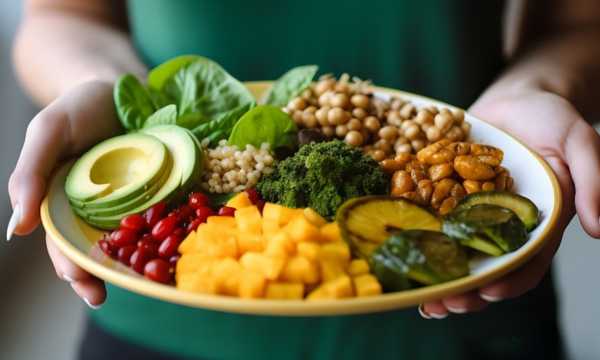Learn how a healthy eating can increase the resistance and reduce fatigue of massage therapists, helping them maintain energy and well-being throughout their routine.
Ad
The massage therapy is a profession that demands a lot from the body, and a healthy diet comes into play as one of its most important tools.
Every movement and every completed session consumes an energy that we often don’t even notice. The result is the tiredness that arrives at the end of the day and a feeling of exhaustion.
Ad
But what if it were possible to end the day with renewed energy? And what if your body were prepared to sustain the physical and mental demands of your work?
The key to this vitality is in what you put on your plate every day. Food is your fuel.
Ad
This content will show you how your diet can transform your routine, bringing more energy, resistance, and well-being so you can continue taking care of what you love.
1. Foods That Prevent Muscle Fatigue: What to Include in Your Daily Life
To maintain your energy and performance as a massage therapist, your diet should be an ally, providing nutrients essential for strength, endurance, and muscle recovery.

Energy food tips (Google Source)
Below, see the main foods you can include:
- Complex carbohydrates: your main source of energy, they help keep blood glucose stable, avoiding energy crashes. Include sweet potatoes, oats, brown rice, and quinoa.
- Proteins: essential for repairing muscle microtears. Opt for lean sources like chicken breast, eggs, fish, and legumes.
- Healthy fats: important for hormonal health and fighting inflammation. Include olive oil, avocado, and chia seeds to protect joints and reduce pain.
2. Healthy Snack Ideas for Quick Breaks Between Sessions
Breaks between sessions are short, but essential.
Making the right choice in these moments through healthy eating can make all the difference in your energy level.
- Mix of nuts and seeds: It’s practical and full of energy, protein, and good fats. A small portion already helps to satisfy hunger and maintain focus.
- Fruits: Bananas, apples, and dates are easy to carry and provide a quick dose of natural energy. Fruits also contain potassium, which helps prevent cramps.
- Natural yogurt: It’s a great source of protein, which helps in muscle recovery. Combine with a little granola for a more complete snack.
- Whole wheat bread with peanut butter: A classic combination that offers carbs for energy and protein for satiety, sustaining you for longer.
3. Hydration: The Secret to Avoiding Aches and Excessive Tiredness
Dehydration is one of the main reasons behind muscle fatigue and headaches.

Importance of staying hydrated (Source: Canva)
Our muscles are made of water, and its lack can seriously compromise their function, leading to spasms and cramps.
Hydrate regularly; feeling thirsty means your body is already lacking water.
Keep a water bottle close by at all times, even during sessions, and drink small sips constantly.
To replenish electrolytes lost through sweat, coconut water is a great natural alternative. Unsweetened herbal teas, like chamomile or mint, also contribute to hydration and can have a relaxing effect.
4. Tips for Meals That Provide Sustenance for Long Days
Preparing meals that provide energy and endurance through healthy eating is essential for maintaining productivity throughout the day.
The ideal is for each meal to combine the three macronutrients intelligently, ensuring strength and recovery.
Breakfast:
To start the day with energy, include complex carbohydrates, proteins, and healthy fats. A bowl of oatmeal with fruits and seeds ensures lasting energy.
Another option is an omelet with vegetables accompanied by whole wheat bread, providing essential nutrients for the start of the day.
Lunch:
Lunch should be a complete meal, avoiding drowsiness and maintaining productivity.
A plate with salad, grilled chicken or fish, and a portion of quinoa or brown rice combines quality proteins and carbs.
Avoid heavy and very greasy meals, which can reduce your performance.
Dinner:
Dinner should focus on recovery. Lighter, nutrient-rich meals with cooked vegetables and a lean protein source help your body regenerate overnight, preparing you for the next day with renewed energy.
5. Foods that Promote Muscle Well-being
A massage therapist’s work can cause muscle and joint discomfort.
Including the right foods in your diet is a proactive strategy to prevent this problem and ensure a longer-lasting career.
- Ginger and turmeric: These are powerful spices with anti-inflammatory properties. Use them in teas, juices, or as seasoning in your meals.
- Dark leafy greens: Spinach and kale are options rich in antioxidants and vitamins needed to reduce muscle discomfort.
- Red berries: Strawberries, blueberries, and raspberries are full of antioxidants that fight oxidative stress and inflammation.
- Fatty fish:Salmon, tuna, and sardines are great options rich in omega-3 fatty acids and recognized for their great influence on health and well-being.
6. Weekly Planning: How to Organize Your Eating Routine in a Practical Way
A massage therapist’s routine is busy. Therefore, the key to maintaining a healthy eating is planning.
- Set aside time to plan: Choose one day a week to think about your meals and snacks. Adopting this habit prevents you from craving junk food and abandoning good eating habits.
- Make a shopping list: List all the ingredients you need, ensuring you won’t run out of anything.
- Prepare your meals: Dedicate a few hours to cook and portion your food. You can have snacks ready and prepare the bases of meals (like grains and proteins) for the entire week.
- Keep snacks handy: Have your snacks packed and easy to grab, ready for the rush of your daily life.
Planning not only ensures a nutritious diet but also relieves stress and saves time, allowing you to focus on what really matters: your health and the quality of your services.
7. The Benefits of a Healthy Eating in the Massage Therapist’s Routine
Taking care of your diet is a direct investment in your career. Proper nutrition isn’t just about not being hungry; it’s about optimizing every function of your body.
A healthy eating directly impacts the prevention of muscle fatigue and recovery, which are crucial in massage therapy.
When your body receives the right nutrients, muscle inflammation decreases, joint pain becomes less frequent, and your concentration improves.
A nutritious diet helps you keep your mind sharp throughout the day.
In addition, good nutrition helps to balance mood and reduce stress, which are also major challenges for those who work with the public.
It’s a form of self-care that goes far beyond the muscles, encompassing your health in a holistic way.
Conclusion
Taking care of your healthy eating is the most profound way to prepare for the daily challenges of your profession.
Every choice on your plate is an investment in your energy and longevity.
Your vitality is a reflection of your self-care. By nourishing your body, you become stronger, more resilient, and prepared to continue making a difference in your clients’ lives.
So, take note of our tips and start today!


